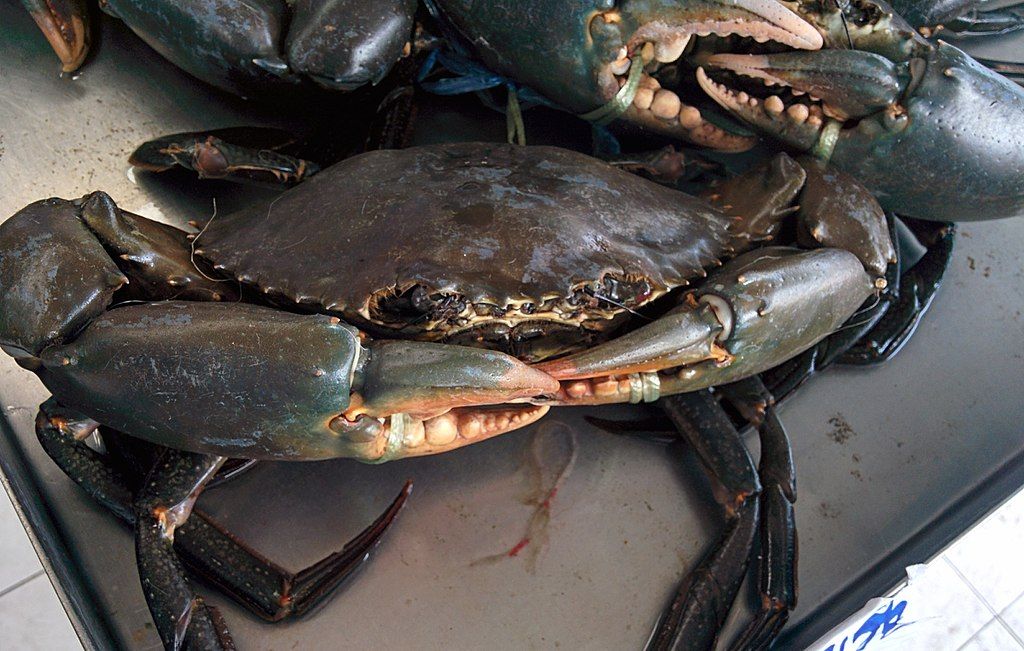Mud crabs of the genus Scylla can be found in the Pacific Ocean (including Hawaii, Japan, Taiwan, the Philippines, Indonesia, and Australia) and the Indian Ocean (such as Eastern and Southern coast Africa, Red Sea, Sri Lanka, Bangladesh and India) (Schreiber and Cases, 1984; Tan and Ng, 1994; Ng, 1998; Chou et al., 1999). They can be found on muddy bottoms of brackish water near the coast, mangrove areas, and river mouths. Scylla paramamosain, Scylla serrata, Scylla tanquebarica, and Scylla olivacea are the four species found in Indonesia (Lebata et al., 2007; Poupin, 1996; Suryandari et al., 2018).
Scylla is a commercially important crab in Asian countries such as Indonesia, Malaysia, Thailand, the Philippines, Taiwan, India, and Bangladesh (Mamun et al., 2008). Female mud crabs with mature ovaries are regarded as a rare and expensive delicacy in several Asian countries (Ghosh et al., 2003; Begum et al., 2008). Since 2015, it has been illegal in Indonesia to catch female crabs, with the exception of male crabs with a minimum carapace width of 15 cm. According to the Indonesian Central Statistics Agency, the value of Indonesia’s crab exports in 2017 was around US$153 million, ranking third among fishery exports behind shrimp and tuna. Crabs are supplied from capture fisheries and aquaculture, with capture fisheries accounting for 65% of Indonesian crab exports and aquaculture accounting for the remainder (35%).
Scylla burrows deep into soft substrates in mangrove swamps shallow and intertidal waters (Ng, 1998). Forages at night, eating shrimp, crabs, fish, bivalves and detritus (Le Reste et al., 1976), and is a prominent predator of tiny invertebrates in mangrove swamps (Cannicci et al., 1996). Because crabs and other crustaceans live in the muddy substrates of river mouths, coasts, and mangrove areas, they have the potential to be utilized as bio-indicators of pollution, particularly heavy metals (Rainbow and Luoma, 2011; Mazzei et al., 2014). The northern coast of East Java Indonesia receives the passage of two of Java’s main rivers: the Solo River, which empties into the Java Sea, and the Brantas River, which empties into the Madura Strait. Both estuaries (mouth of Solo and Brantas rivers) have large mangrove areas that provide suitable mud crab habitats. Many agricultural, residential, and industrial activities occur along the Solo and Brantas rivers (Roosmini et al., 2018); as a result, waste from all of these activities enters the rivers and can contaminate species that live in the river’s mouth at surrounding area, including crabs. Measuring the levels of heavy metals contained in crabs in these areas therefore is essential for public health. The goals of this study were to determine the levels of metals particularly Cd, Pb, Hg, Zn, Cu, and Cr in soft tissues of mud crab (Scylla serrata Forskal, 1775) captured from the East Java estuaries (EJE), as well as the potential health concerns to humans who consume this mud crab.
The result from the study shows that mud crabs from the Solo River estuary (JS) had the highest levels of all metals tested when compared to mud crabs from the Brantas River estuary (MS) and the Banyuwangi coastal area (BS). Metal accumulation in mud crabs occurred in the following order: Zn > Cu > Cr > Pb > Cd > Hg. The estimated weekly intake values for all metals from all stations were less than the provisional tolerable weekly intake requirement. Similarly, all metal target hazard quotient values from all stations were less than one, suggesting that all metals were within the allowable intake limit. The target cancer risk values for Cd and Cr, on the other hand, were somewhat higher than 10-4, indicating that they were dangerous for human ingestion and possibly linked to a risk associated with carcinogenic agent exposure over a lifetime.
Author: Agoes Soegianto, Suci Ichda Wahyuni, Bambang Yulianto, dan Latifah Abd Manaf
Published in journal: Environmental Toxicology and Pharmacology 90 (2022) 103810





